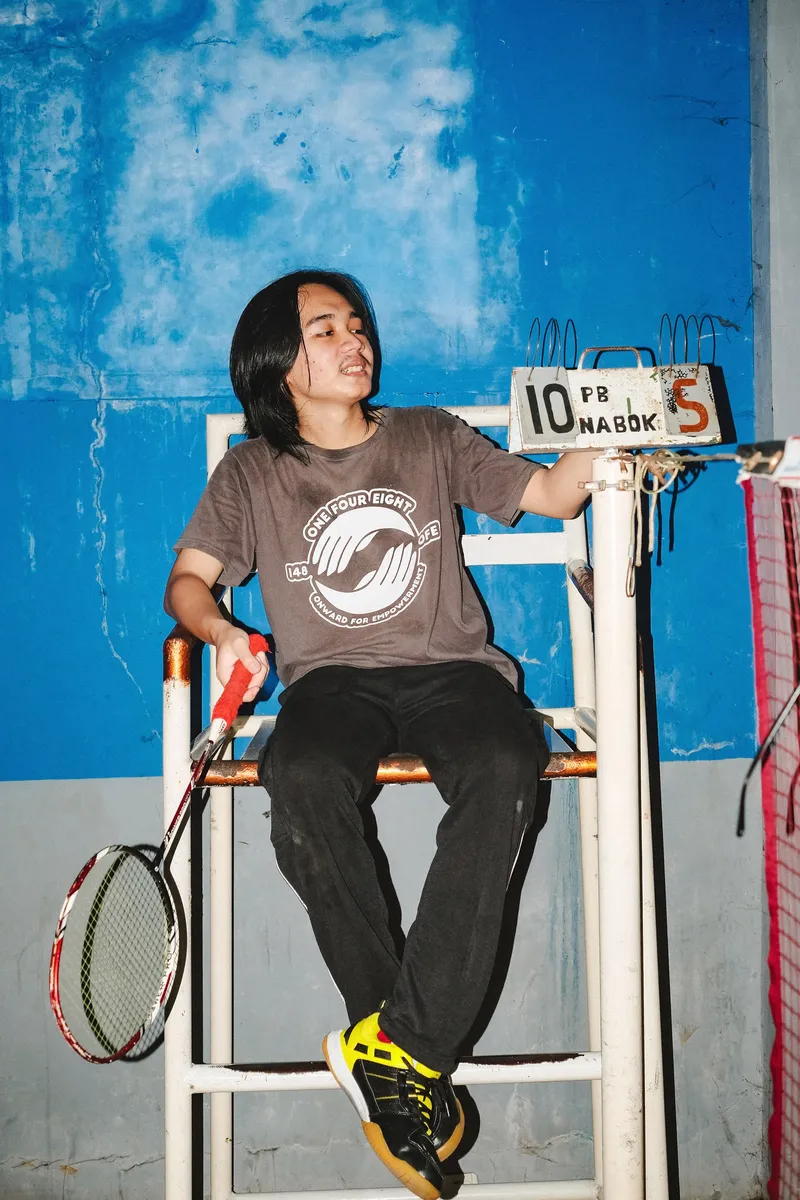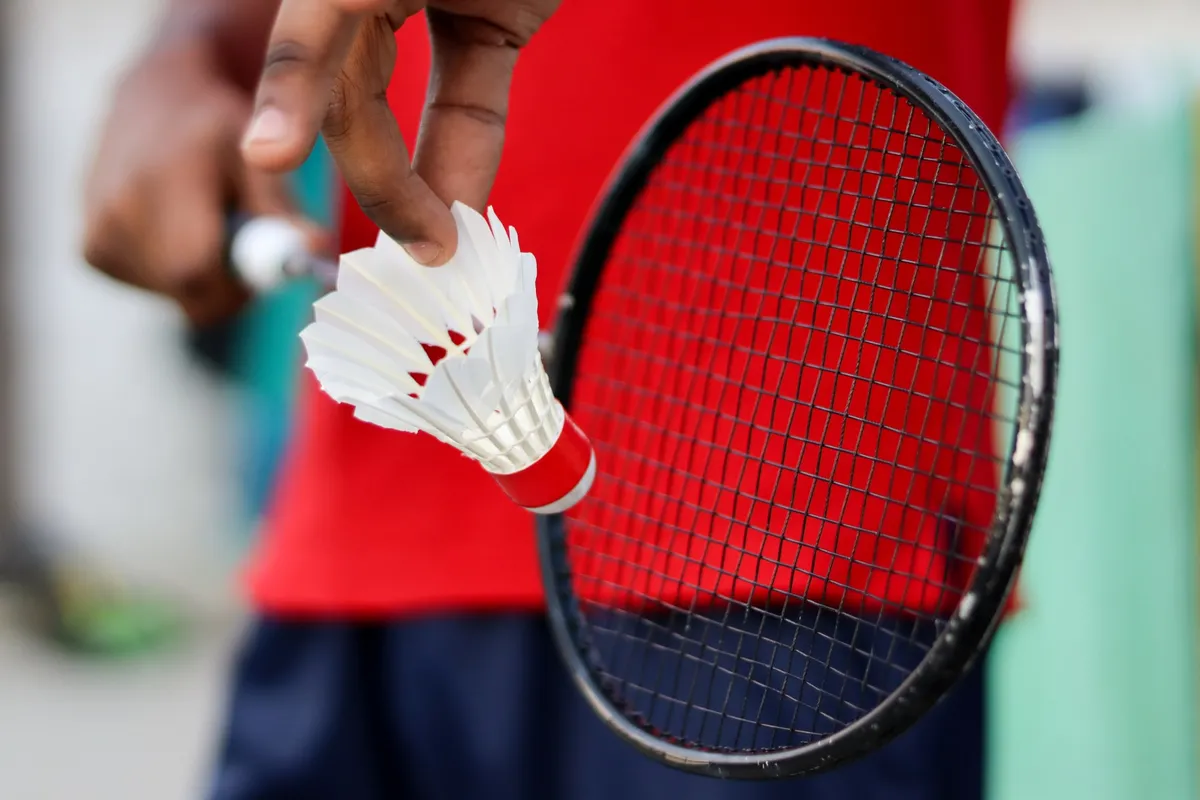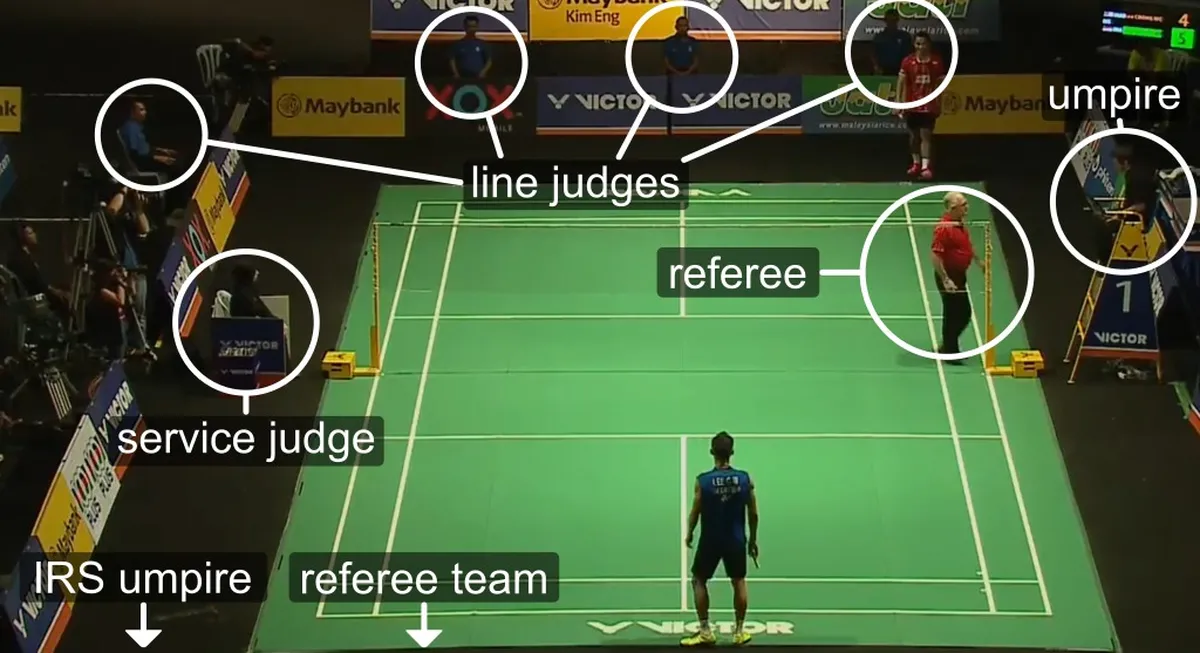At international competitions and major badminton tournaments, there are, surprisingly, a lot of officials. At a minimum, there are 13 officials that are in charge of a badminton match. 1 referee, who is in charge of the tournament, and they may have deputies and other (referee) team members. 1 umpire who’s in charge of the court. 1 service judge who calls service faults. 10-line judges. Let’s look at their roles
Badminton Referee
The referee is in charge of the tournament and has absolute authority – on-court and off court. He’s the final arbitrator on matters on and off the court! They also handle all tournament organization. As you can imagine, a badminton referee has a lot of responsibilities. And so, he usually has a team to assist him – assistant referees.
Referees are responsible for making sure that tournament players and officials have adequate facilities. Making sure that all equipment is up to Badminton World Federations (BWF) standards. Schedule all matches and assign umpires, and other officials (in consultation with the umpire), to officiate the matches. They also liaise with coaches and badminton teams participating at the tournament.
Referees are rarely on court – except during extraordinary circumstances, and when matters are referred to them by the umpire. Outside of the major tournaments, you’ll find referees that also take on the role of umpires.
Badminton Umpire

A badminton umpire is in charge of court and its surrounding. Match umpires report to the referee. In tournament where the Instant Review System (“Hawkeye”) is available, you may have an IRS badminton umpire that makes calls on IRS challenges. But more often than not, you’ll have 1 badminton umpire that’s also responsible for making IRS calls.
While the referee is in charge of the tournament, the umpire is in charge of the court and the match. They may refer some decisions to the referee – especially appeals to badminton laws or questions. However, it’s the umpire’s duty to uphold and enforce the laws of badminton. They are the only official players can speak to during a match and handle all appeals or disputes during the match.
Another major role of umpires is to keep the players, judges, and spectators informed of the score, which they keep, (re)starting play, calling “service over”, faults and lets, and breaks in play. The umpire sits on the umpire’s chair – which is usually raised above the net and gives him a good view of all the line judges and the service judge.
Badminton Service Judge

The badminton service judge has 2 roles: call service faults and hold the shuttles. The umpire might delegate some of their duties: checking shuttle speeds, height of the net, position of the poles etc. to the service judge. But the main job of the service judge is to watch the server and see if the serve is legal. Seems like an easy job, but the badminton serve is one of the most contentious parts of the game. That’s why it has a dedicated judge.
The service judge sits on a low chair, at the middle of the court, directly opposite the umpire. If no service judge is appointed, the umpire takes on the role of the service judge
Badminton Line Judges

The role of a badminton line judge is to judge whether the shuttle has landed in or out of the court if the birdie lands near the lines they are assigned to. If the line judge is unsighted (for instance by a player), they should signal the umpire that they didn’t see where the shuttlecock landed.
The BWF recommends 10-line judges per court. And it is the job of the umpire to make sure that he has enough line judges to help him in making decision. Most of the line judges are positioned opposite the umpire so that the umpire can clearly see them.
There are 2-line judges for the short service line, one on each side of the court. 2-line judges for the center line, one on each end of the court. For singles, there are 4-line judges – 2 on each end of the court assigned the singles side lines. For doubles, there are 4-line judges – 2 on each end of the court assigned the doubles side lines. Finally, there are 2 back boundary line judges, one each end and for doubles the back boundary line judges also serve as the long service line judges. Hence, they sit between the two back lines.
At our local badminton court one of us takes the role of the empire and service judges. Whenever possible, we like to have 2-line judges at each end of the court – especially if we have a local tournament. But during our practice sessions and everyday games, we don’t have line judges and rely on the on-court players to inform the umpire where the birdie has landed. And I have played games where we didn’t have an umpire and we, the player, took on the role of the umpire service judge, and line judges.
So, most badminton games are played with an umpire, but it’s not unheard off for badminton players to enjoy the game without any formal officiating.
That’s it for this post on officials in badminton matches. Hope you enjoyed it. If you have any questions let me know in the comment section below.


Leave a Reply